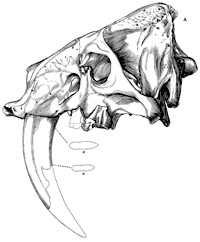Museum, University of Nebraska State

Bulletin of the University of Nebraska State Museum (1924–2023)
Date of this Version
6-1955
Document Type
Article
Citation
BULLETIN OF The University of Nebraska State Museum VOLUME 4, NUMBER 2, pp 17-52, Figs 1-12, JUNE 1955
Abstract
The Chadron and Brule formations constitute the White River Group in Nebraska and adjacent states. The Brule is divided into the Orella and Whitney members. The latter members are referred to the Medial and Late Oligocene (equivalents of the European Stampian and Aquitanian), while-the Chadron is equated with the Early Oligocene (Sannoisian). Each unit in Nebraska is subdivided into three parts (Lower, Middle, and Upper; or A, B, and C for the Chadron and Whitney, and A-B, C, and D for the Orella). Key beds such as fossil soils (paleosols), Purplish White beds, and volcanic ash layers, when considered with the fossil mammals, are especially useful for correlations between Nebraska, South Dakota, Wyoming, and Colorado. A pre-Chadron (Eocene and perhaps older) paleosol complex is recognized, for which the well-known name Interior is retained, and another paleosol complex occurs at the top of the loessic Whitney silts (latest Oligocene and perhaps earliest Miocene), for which the name Bayard is proposed. It may be possible to extend the proposed classification throughout the Oligocene outcrops of the states mentioned.
Included in
Entomology Commons, Geology Commons, Geomorphology Commons, Other Ecology and Evolutionary Biology Commons, Paleobiology Commons, Paleontology Commons, Sedimentology Commons


Comments
CONTRIBUTION of the Department of Geology, College of Arts and Sciences, and the Division of Vertebrate Paleontology of the Museum, June 1955